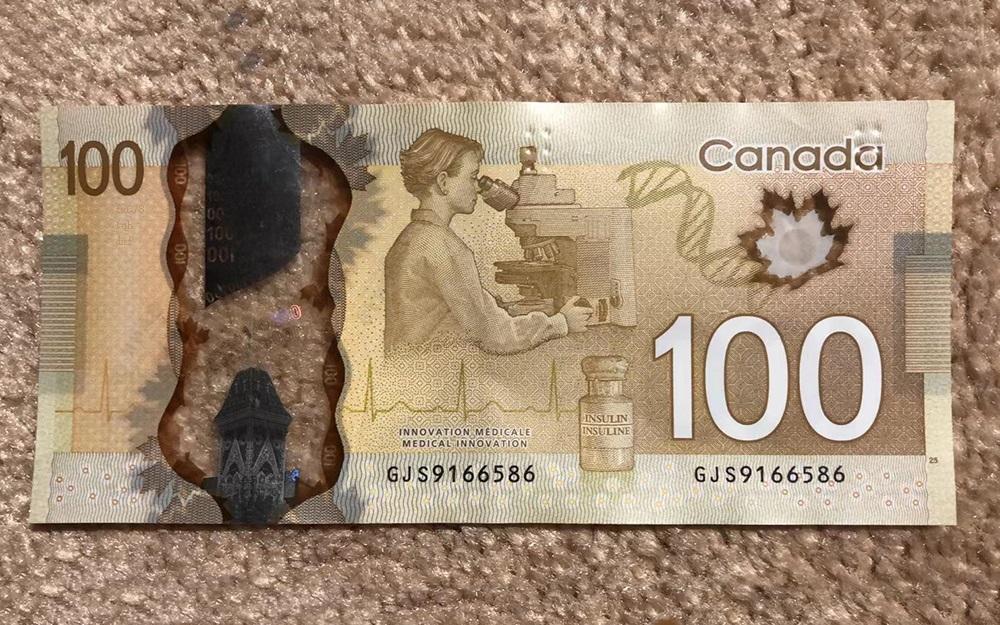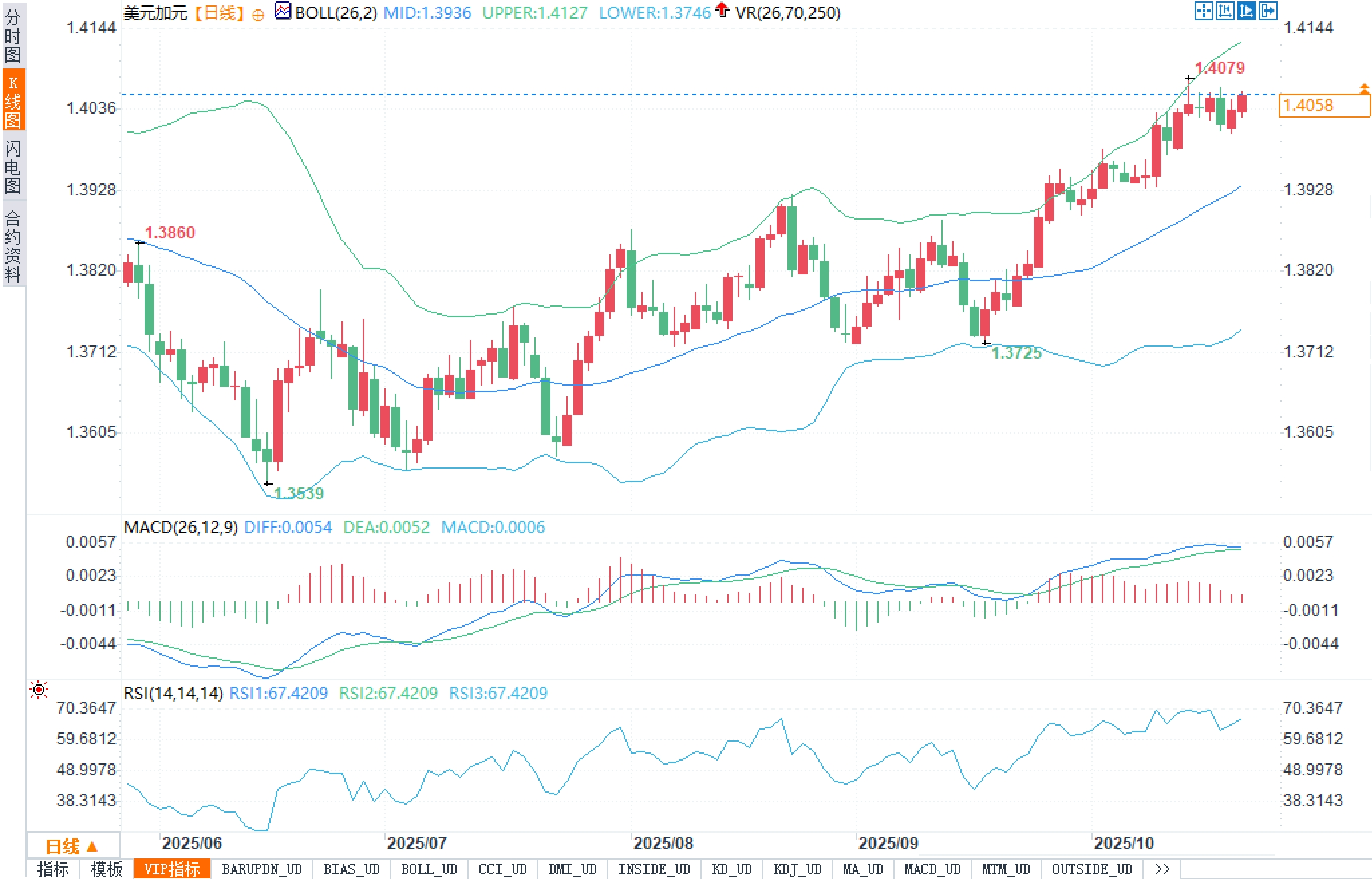Inflation finalized: Which way will USD/CAD go after tonight?
2025-10-21 17:21:10

Fundamentals
The Bank of Canada's recently released business climate survey shows that businesses perceive the operating environment to have improved slightly compared to the beginning of the year, but remain cautious about capital expenditures and hiring intentions due to tariffs. The survey also shows that inflation expectations are generally contained, a combination that has reinforced market bets on another rate cut in October. Interest rate derivatives imply a "nearly 77%" probability of a small 25 basis point rate cut in October. Following Governor Macklem's dovish stance last week, another market pricing has increased this probability from 68% to 86%. Both approaches share the same principle: a rate cut remains the baseline scenario. Last month, the Bank of Canada cut its policy rate to a three-year low of 2.50%. Further cuts would further narrow the Canadian dollar's interest rate differential, creating a tailwind for the USD/CAD exchange rate.
Regarding commodities, crude oil fell to a new five-month low. As a currency highly correlated with energy, the Canadian dollar tends to weaken passively during periods of falling oil prices. Especially given Canada's role as a major supplier of crude oil to North America, falling oil prices suppress the country's nominal exports and nominal revenues, often reflecting exchange rate risk premiums through current account and fiscal expectations. The combination of weak oil prices and expectations of interest rate cuts has become a key driver of the exchange rate's approach to 1.41.
Looking ahead, the market is focused on tonight's Canadian CPI: 2.3% year-on-year (previous 1.9%) and 0.0% month-on-month (previous -0.1%) are considered the baseline. The revised average core CPI is 3.0% year-on-year (previous 3.0%), having fluctuated roughly around 3% since February 2025. Combined with recent strong Canadian employment data, if inflation rises unexpectedly, the market may engage in a short-term hawkish repricing, temporarily strengthening the Canadian dollar and suppressing the exchange rate. If inflation is moderate or subsides, it will reinforce the baseline for rate cuts and be bullish for the exchange rate.
On the US dollar side, the federal government shutdown, entering its fourth week and the Senate's failure to pass a funding bill (its 11th setback), could weigh on US growth expectations and US dollar risk appetite in the short to medium term. This factor's impact on the dollar varies nonlinearly across a range of factors: duration, financial conditions, and data feedback. If the shutdown drags on and spills over into high-frequency growth indicators, the dollar could be suppressed. However, if the fiscal game nears a resolution, a short-term rebound in the dollar is possible. Overall, the uncertainty surrounding the US dollar's fundamentals further underscores the dominance of tonight's Canadian CPI data on the market.
Technical aspects:
On the daily chart, the upper Bollinger Band is 1.4127, the middle Bollinger Band is 1.3936, and the lower Bollinger Band is 1.3746. Recent candlestick charts have consistently closed above the middle Bollinger Band and have frequently moved close to the upper Bollinger Band, demonstrating a trend-driven buying pattern within an upward channel. 1.4079 marks the recent high. If it breaks above on strong volume, the Bollinger Band opening is expected to expand modestly, and the price will likely test dynamic resistance near the upper Bollinger Band at 1.4127. A subsequent decline could easily trigger a retest of the middle Bollinger Band at 1.3936, prompting a retest of the previous resistance level. Downward static support refers to the previous structural level of 1.3860, while further below lies the resonance zone between the lower Bollinger Band and the swing low at 1.3746/1.3725.

MACD (26, 12, 9) is in a slightly positive range with a DIFF of 0.0054, a DEA of 0.0052, and a bar value of approximately 0.0006, indicating positive momentum but limited spread. If prices subsequently reach new highs without a simultaneous expansion of the bar chart, caution is warranted regarding the risk of a top divergence. RSI (14) is at 67.4209, approaching the overbought threshold of 70. If the short-term trend continues to rise along the upper track, a mean-reversion technical retracement could occur at any time. The overall technical structure can be summarized as follows: the medium-term upward trend continues, but short-term momentum is slightly tight. The key lies in the quality of the breakout at 1.4079 and the success of the retracement at 1.3936.
Market Sentiment Observation
Option pricing and market behavior indicate that the market is more inclined to view "BoC rate cuts and weak oil prices" as the main trend. However, before the release of CPI, sentiment showed a typical configuration of bullishness and cautiousness regarding data:
Bullish market sentiment: Prices are climbing close to the upper track, and trend trading and momentum strategies tend to "try to buy on every pullback", resulting in the depth of the retracement during the upward process being frequently "buy-cut off".
Bearish market sentiment: RSI is approaching the overbought threshold and MACD-Histogram momentum has not expanded significantly, making counter-trend strategies more willing to look for false breakouts and divergence clues near previous highs.
Consensus and Divergence: The probability of a Bank of Canada rate cut in October is not entirely consistent (estimates range from close to 77% to an upward revision to 86%), making post-data repricing a potential volatility amplifier. If Canada's CPI reading is positive, short USD/CAD positions could see short-covering; if it is negative, bullish sentiment could drive the exchange rate towards the 1.4079-1.4127 range.
- Risk Warning and Disclaimer
- The market involves risk, and trading may not be suitable for all investors. This article is for reference only and does not constitute personal investment advice, nor does it take into account certain users’ specific investment objectives, financial situation, or other needs. Any investment decisions made based on this information are at your own risk.





















